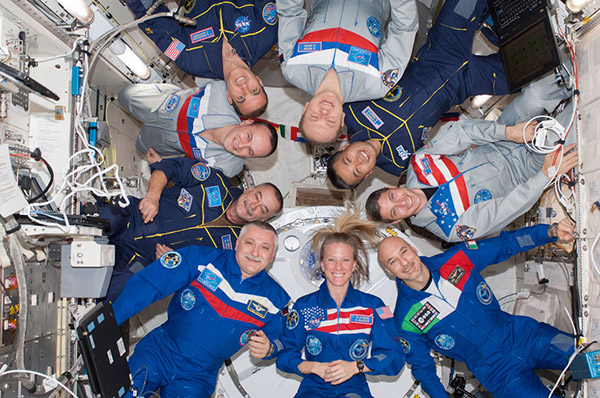I think I’ve been most surprised by how effectively exploring anthropology in the context of [outer] space has educated me on anthropology in general. Having never taken a prior anthropology class, I think learning about it (and consequently, us) through a specific topic, such as space anthropology, has been a great way to learn.
This is the kind of student endorsement that makes a professor’s heart sing. A few weeks ago, I asked students in my “Anthropology of Outer Space” class to provide me with some feedback on what “surprised” them most about this class. I did this to confirm a hunch that as much as the students were excited about outer space, they were becoming equally excited about anthropology.
Sure enough, a third of the anthropology of outer space class said that what surprised them most was their interest in and the relevance of anthropology both for understanding human culture in general and science in specific. The class, I should note, is being taught at the University of Virginia, and cross-listed between the School of Engineering and the College of Arts and Sciences. With two exceptions, the students are majoring in STEM fields. For many of the engineering students, this is their first humanities/social science class in college; for most every other student, their first anthropology class.
Though this blog usually focuses on research, we are also all teachers in varying ways. My hope is that this post (and its comments) can provide a space for those of us teaching anthropology of science or STS to reflect on our work in the classroom. My experiences with this class offer insight into how teaching STS to STEM students is effective for expanding the set of tools these students bring into their future careers.

Image: Group photograph aboard the International Space Station. Image Credit: NASA
My class is a Mary Poppins approach to the social sciences, in that a spoon full of sugar (outer space) helps the medicine (anthropology) go down. This class is designed to pair traditional foci of anthropology (identity, myth, structure, etc.) with cultural readings of space science and exploration. For example, for an early class session titled “Strange Rituals and Familiar Planets,” I began by describing various pre-flight rituals that Russian cosmonauts participate in before launch. The question posed to the students was why cosmonauts, presumably as scientifically minded as one can get, pee on a bus tire on the side of the road on the way to launch?
With student interest piqued, we shifted to discussing theories of ritual, focusing on the function and meaning of ritual according to different anthropologists. In class, we read some Malinowski to link the study of ritual to the anthropological desire to make the strange familiar, discussed the inverse of this impulse by drawing on the reading they did before class, Horace Miner’s “Body Ritual among the Nacirema,” and linked this up to Carl Sagan’s description of Earth from outer space as a similar way of making the familiar strange. In other words, there was a whole lot of medicine included, but the students did not see it that way. Moreover, by the end of class they found themselves with a set of tools to then go back and understand cosmonaut rituals. Something that began the class as a mystery could be solved.
For engineers and scientist, this approach has transformed anthropology from something they assumed before class to be “silly” to “relevant” for understanding what they are passionate about. This, then, speaks to the overall mission of my department. Engineering and Society is located in the school of engineering and, among other things, teaches the four required STS classes to all undergraduate engineers. Most significantly, in addition to writing a senior technical thesis, two of these classes assist students in writing a complementary STS thesis. The challenge, you can imagine, is getting pragmatic engineers to accept that there are other, non-technical, ways of knowing the world. If not downright resistant, many students begin the term simply not caring about the social sciences and almost universally seeing it as a lesser epistemology.
However, when showing that anthropology (and STS) can be used to shed light on a domain they previously only encountered through STEM methods, a shift occurs and these other tools are seen by students as potentially useful. Moreover, they slowly learn that there is a whole other set of questions that their approaches can’t answer.
This is of course obvious to those of us trained in anthropology of science and STS. But, getting this message to STEM students—getting them to appreciate and perhaps even embrace social science and humanistic ways of knowing—will make them better engineers and scientists because they will know other approaches when faced with a problem that technical tools alone cannot solve.
In “Anthropology of Outer Space,” students receive a serious introduction to cultural anthropology as well as an immediate understanding of its application to a STEM field. I am finding this a successful way to get students interested in anthropology in and of itself. In the comments, I hope you’ll share your experiences teaching STEM students humanities and social science and what techniques you’ve found successful—not only in interesting these students in our fields, but also getting them invested in bringing these fields into their technical practice.

3 Comments
Lisa,
Awesome post! What a wonderful way to get STEM students interested in anthropology and STS.
Do you assign Stacia E. Zabusky’s “Ethnography in/of transnational processes: following gyres in the worlds of big science and European integration” from “Ethnography in Unstable Places”?
John,
Sorry, I only now saw this comment. I don’t, but I really like Zabusky’s work and that is an excellent suggestion for the future!
Lisa
1 Trackback